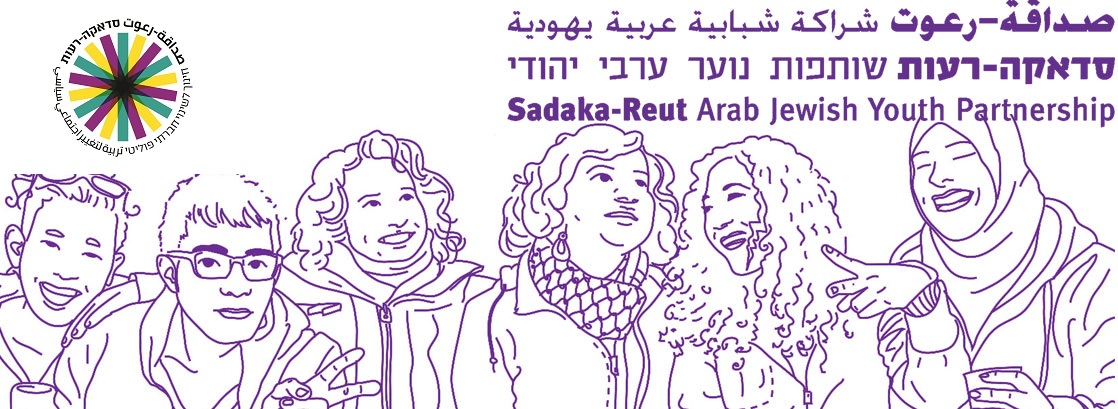Photo credit: https://www.reutsadaka.org/
Peace education, in theory and practice, adapts to the context in which it is practiced. In conflict areas, peace education often aims to foster tolerance and understanding of the many perspectives and narratives that are in play. These programs that bring together people from conflicting groups are often called encounter programs. In ‘conflict-free’ areas, peace education often works to challenge systems of oppression or injustice and provides holistic approaches to analyze these issues.
In this article, the notion of ‘quality’ encounter programs in Israel is examined by comparing two programs bringing together Palestinian and Jewish youth, providing an opportunity to legitimize the story of ‘the other’ and reflect on the collective in-group narratives. The author focuses his analysis on Peace Child Israel and Sadaka Reut, two long-standing peace education programs located in Israel that act as a lens for measuring the quality and successful implementation of encounter-focused peace education in conflict zones. The Sadaka Reut program provides a space for “civic, political, and social discussions about the conflict and Jewish/Arab relations, and encourages social involvement and the importance of assuming responsibility for one’s social and political environment”. The Peace Child Israel program focuses on educating on democratic values, tolerance and mutual respect.
Most often, encounter programs hope that by bringing together two groups from conflicting parties of a conflict, dialogue and storytelling can help bring awareness to similarities between groups and broaden the understanding the respective history, social and political narratives and views of ‘the other’. Based on interviews with program participants, the author identifies factors based on the degree to which the program is able to encourage participants to turn a critical eye on their in-group narrative and socio-political environment.
One defining factor of a quality encounter program was the program’s ability to help participants learn to ask critical questions about their environment, and equally important, continue this critique after the program ended. Of the 30 participants in the Peace Child Israel program, 30% of them continued their involvement in social change advocacy either through interaction with their families, friends or sociopolitical events. Conversely, 65% of the 45 participants in the Sadaka Reut program displayed ongoing involvement in social activities aimed at changing Israel’s sociopolitical environment. They credited their activism to the initial exposure to sociopolitical issues and the knowledge and skills provided by the Sadaka Reut program.
Although the two encounter programs differed in approach, the more important take-away between analyzing these two programs is the importance of implementing peace education that focuses on intergroup encounters and providing opportunities for participants to critically examine the role of their group within the conflict, especially among members of dominant groups in society. In doing so, peace education can initiate critical interaction and dialogue between conflict participants and encourage them to challenge the status-quo.
Contemporary Relevance:
Many conflicts are prolonged due to the entrenched beliefs and judgements that groups have for one another. Encounter programs, often based on so-called contact theory, have proven to be successful in bringing together participants from conflicting groups to challenge their beliefs of ‘the other’, discuss the origins of such beliefs and create areas of commonality and transformation. Many of today’s violent conflicts stem from waring groups from the same country or region. If brought together under a similar encounter format, past results have shown that discussing the goals, motives and beliefs behind violent conflict can improve the view of ‘the other’ and contribute towards a path of reconciliation alongside other measures of constructive conflict transformation.
Talking Points:
- Quality peace education programs should help participants identify existing inequalities and provide them with the tools and encouragement to address these issues once the program has ended.
- Quality encounter programs help participants critically question their environment during and after the program.
- Dominant groups of society have a greater opportunity to examine their role in a conflict and how their beliefs and action affects the more marginalized groups.
- Quality encounter programs increase the likelihood of participants to become advocates for social change.
Practical Implications:
Although peace education programs are important in addressing conflict and empowering social change, programs should not only focus on creating awareness of sociopolitical problems, but also provide the tools and encouragement to convert that awareness into action. Research studying social movement participation shows that awareness is only part of the process of challenging systems of inequality. Evidence shows that before committing to action, people must be convinced not only that they have the power to effect change, but also that there is something that needs to be changed in the first place. This is especially important when considering members of dominant groups, who are often more unaware of underlining structural problems (see: Sharon Erickson Nepstad, 1997. The Process of Cognitive Liberation: Cultural Synapses, Links, and Frame Contradictions in the US-Central America Peace Movement).
Keywords: peace education, Israel/Palestine, critical reflection, encounter programs
Continued Reading
- Sadaka Reut Encounter Program (reutsadaka.org)
- Peace Child Israel Encounter Program (http://www.mideastweb.org/peacechild/about.html)
- Breaking the Cycle: How to Build Sustainable Peace Using Contact Theory by Thomas Etzel (http://www.peacevoice.info/2015/09/03/breaking-the-cycle-how-to-build-sustainable-peace-using-the-contact-theory/)
Citation
Karen Ross (2015) Quality as critique: promoting critical reflection among youth in structured encounter programs, Journal of Peace Education, 12:2, 117-137, DOI: 10.1080/17400201.2014.979400

